나일 삼각주는 배를 타고 오가야만 했다

나일강의 범람은 우리의 상상을 뛰어넘는 풍경이다. 현재 전 세계에서 손꼽히는 비옥한 평야지대인 나일강 하류 삼각주 지역은, 고대 이집트에서는 흩어진 섬들이 자리한 수중 도시였다.
나일강 지류는 7개로 나뉜다
크게 중요한 것은 아니지만, 나일 삼각주 지역에서 침수와 범람이 연례적으로 일어났다는 점을 이해하는 데 도움이 된다.
나일강에는 두 개의 하구가 있는데, 하나는 펠루시움(Pelusium)하구이고, 다른 하나는 카노부스(Canopus) 하구 또는 헤라클레이온(Heracleion) 하구이다. 이 두 하구 사이에는 적어도 언급할 만한 가치가 있는 다섯 개의 다른 하구와 그 보다 작은 하구들이 있다. - 헤로도투스(eBook), 박현태 역, 동서문화동판(동서문화사), 2016.
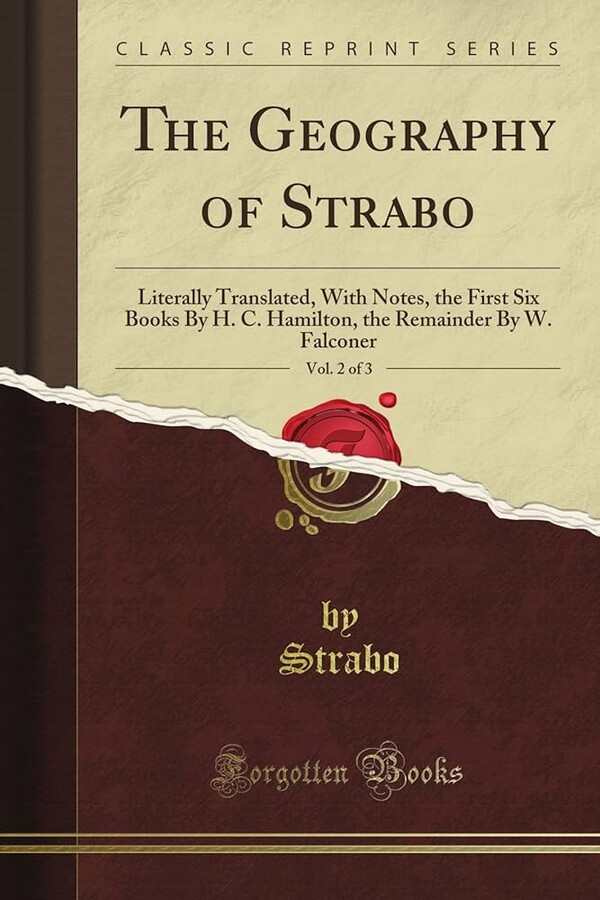
These then are two mouths of the Nile, one of which is called the Pelusiac, the other the Canobic and Heracleiotic mouth. Between these are five other outlets, some of which are considerable, but the greater part are of inferior importance. - Strabo. 1903. The Geography of Strabo. . Translated by Hans Claude Hamilton and W. Falconer. London and New York: G. Bell & Sons. 17.1.
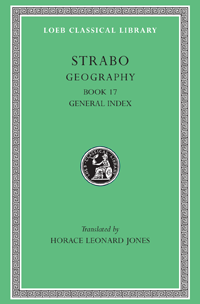
Now these are two mouths of the Nile, of which one is called Pelusiac and the other Canobic or Heracleiotic; but between these there are five other outlets, those at least that are worth mentioning, and several that are smaller. -Strabo. Geography, Volume VIII: Book 17. General Index. Translated by Horace Leonard Jones. Loeb Classical Library 267. Cambridge, MA: Harvard University Press, 1932.

150년경에 저술된, 알렉산드리아 출신의 수학자이며 지리학자인 프톨레마이우스(Claudius Ptolemaeus, c.100– c.170 AD)의 <지리학>(The Geography - Γεωγραφικὴ Ὑφήγησις, Geōgraphikḕ Hyphḗgēsis)에서 아래와 같이 소개한다.
[4.5.10] 나일 강의 일곱 개 하구 [경도, 위도(도, 분)]: 헤라클레오타이스 또는 카노푸스 하구: 60°50′, 31°05′ 볼비트 하구: 61°15′, 31°05′ 세베니티스 하구: 61°30′, 31°05′ 피넵티미스 유사 하구: 61°45′, 31°05′ 디올코스 유사 하구: 62°10′, 31°10′ 파트미티스 하구: 62°30′, 31°10′ 멘데시오스 하구: 62°45′, 31°10′ 타니티스 하구: 63°00′, 31°15′ 펠루시아스 하구: 63°15′, 31°10′ - Ptolemaeus, Brady Kiesling, Geography, Books 2-6.11. (https://topostext.org/work/209)
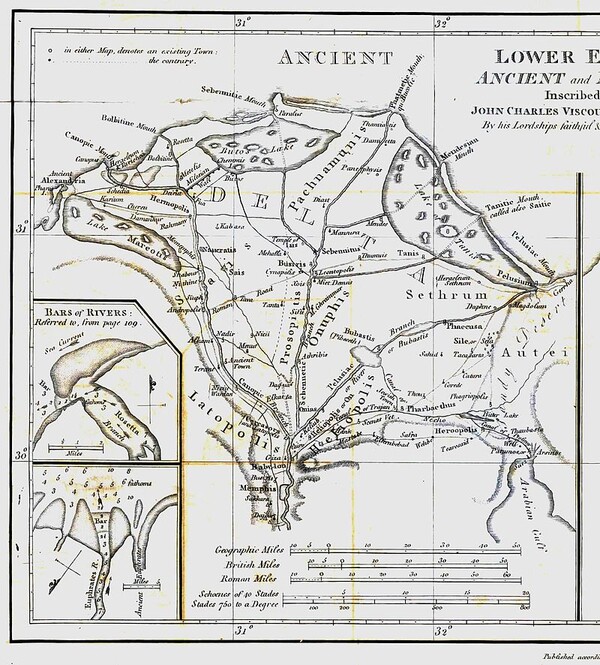
많은 하천과 섬이 형성되다
삼각주의 첫 부분부터 시작하여 강의 여러 지류가 섬 전체에 걸쳐 갈라져 많은 하천과 섬을 형성했기 때문에, 삼각주 전체에서 항해가 가능해졌다. 운하가 여러 개로 나뉘어 있어, 어떤 사람들은 심지어 토기로 만든 배를 이용할 정도로 쉽게 이동할 수 있게 된 떄문이다.
For many others branch off from the principal streams, and are distributed over the whole of the island of the Delta, and form many streams and islands; so that the whole Delta is accessible to boats, one canal succeeding another, and navigated with so much ease, that some persons make use of rafts floated on earthen pots, to transport them from place to place. - Strabo. 1903. The Geography of Strabo. . Translated by Hans Claude Hamilton and W. Falconer. London and New York: G. Bell & Sons. 17.1.
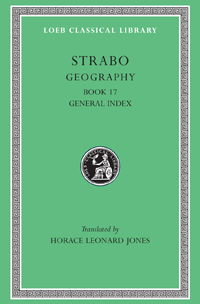
for, beginning with the first parts of the Delta, many branches of the river have been split off throughout the whole island and have formed many streams and islands, so that the whole Delta has become navigable-canals on canals having been cut, which are navigated with such ease that some people even use earthenware ferry-boats. - Strabo. Geography, Volume VIII: Book 17. General Index. Translated by Horace Leonard Jones. Loeb Classical Library 267. Cambridge, MA: Harvard University Press, 1932.
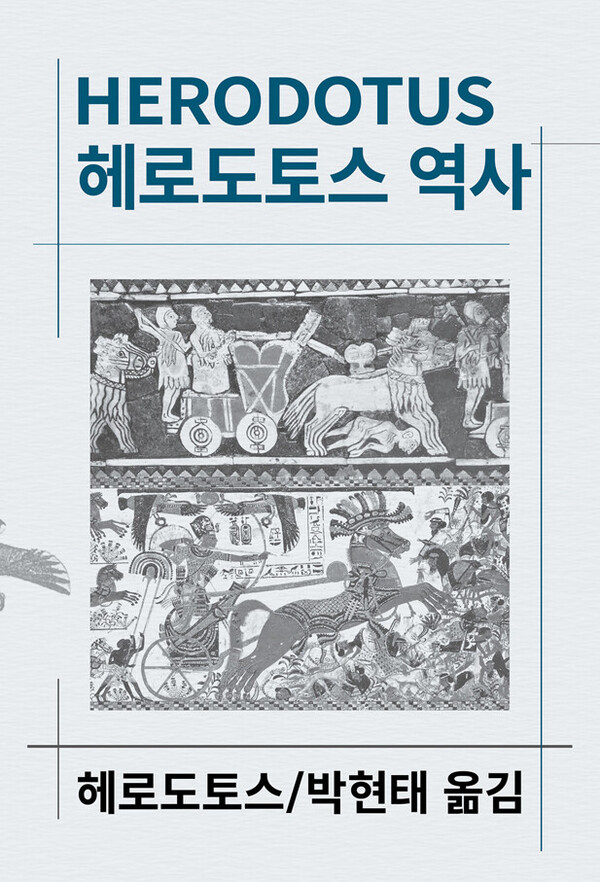
여기서 내륙으로 향해 헬리오폴리스에 이르기까지 이집트의 땅은 광막하게 퍼져, 완전히 평탄하고 물은 풍부하며 진흙땅이 많다. 해변에서 오지로 들어가서 헬리오폴리스에 이르기까지의 길은 .. 해안에서 헬리오폴리스까지의 거리는 이 숫자(주-1500스타디온)를 꽉 채우기 때문이다. - 헤로도투스(eBook), 박현태 역, 동서문화동판(동서문화사), 2016.
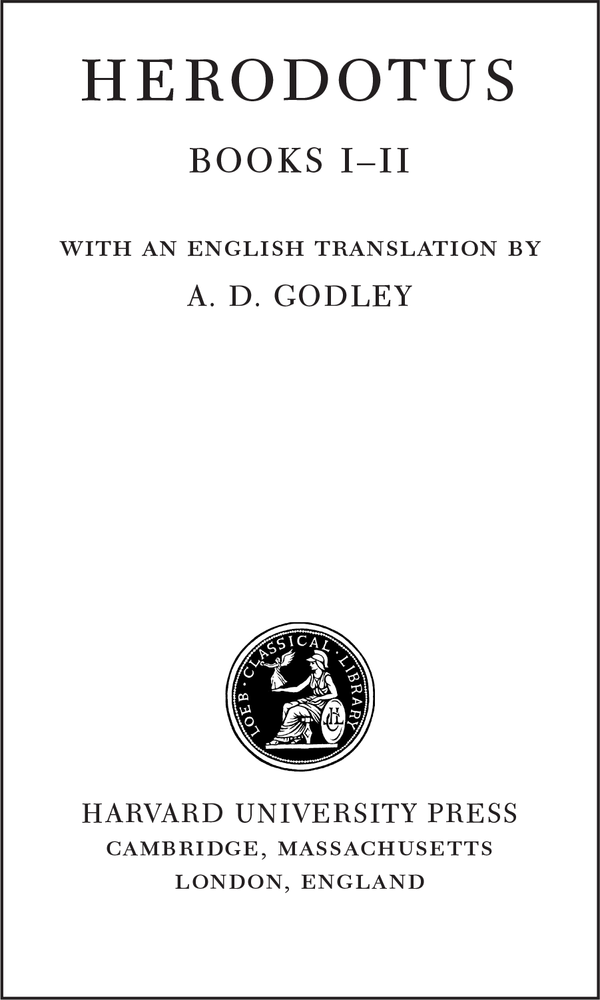
[2.7] From the coast inland as far as Heliopolis the breadth of Egypt is considerable, the country is flat, without springs, and full of swamps. The length of the route from the sea up to Heliopolis is ... hereas the distance of Heliopolis from the sea is just the round number. - Herodotus, with an English translation by A. D. Godley. Cambridge. Harvard University Press. 1920.
물에 잠겨 바다처럼 되다
나일 삼각주는 그야말로 섬 지역이었다. 평소에도 그랬고, 범람 시기에는 더욱 그러했다. 고대 이집트에서는 일반적으로 6-9월 시기를 '범람기'로 불렀다. 고대 이집트는 범람기, 파종기, 수확기의 세 시기로 나뉘었다. 본격적인 범람이 시작되기 직전인 7월 중순에는 한 해의 시작을 알리는 Wepet-Renpet 축제가 열렸다.
스트라보의 이야기를 따라가 보자.
나일강이 범람할 때의 상황이다. 나일강이 범람하면, 자연 언덕이나 둔덕 위에 위치한 거주지를 제외한 모든 지역이 물에 잠겨 바다처럼 보인다. 멀리서 보면 큰 도시와 마을들이 섬처럼 보인다.

Now the island as a whole is as much as three thousand stadia in perimeter; and they also call it, together with the opposite river-lands of the Delta, Lower Egypt; but at the rising of the Nile the whole country is under water and becomes a lake, except the settlements; and these are situated on natural hills or on artificial mounds, and contain cities of considerable size and villages, which, when viewed from afar, resemble islands. - Strabo. Geography, Volume VIII: Book 17. General Index. Translated by Horace Leonard Jones. Loeb Classical Library 267. Cambridge, MA: Harvard University Press, 1932.
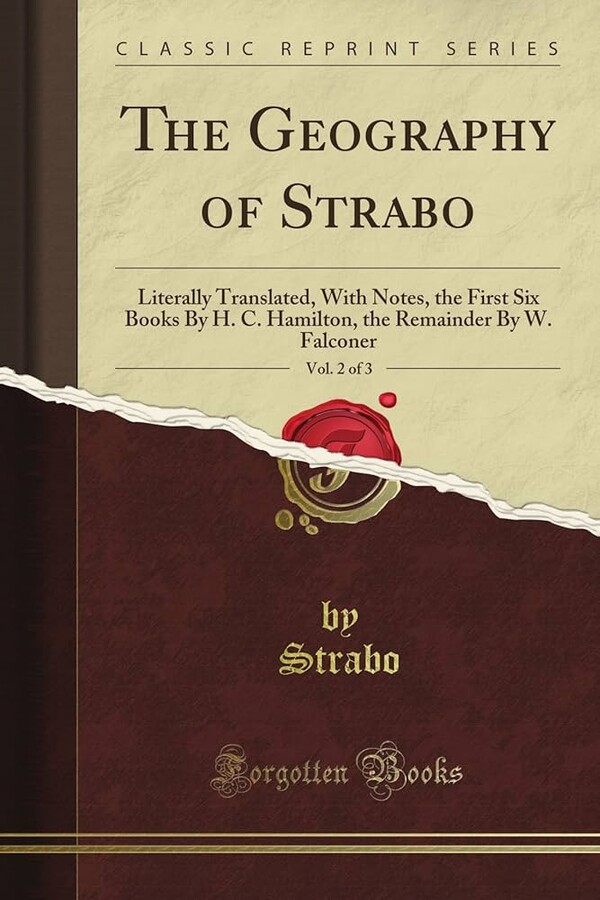
The whole island is about 3000 stadia in circumference, and is called, as also the lower country, with the land on the opposite sides of the streams, the Delta. But at the time of the rising of the Nile, the whole country is covered, and resembles a sea, except the inhabited spots, which are situated upon natural hills or mounds ; and considerable cities and villages appear like islands in the distant prospect. - Strabo. 1903. The Geography of Strabo. . Translated by Hans Claude Hamilton and W. Falconer. London and New York: G. Bell & Sons. 17.1.
![이라크인이 사용하는 꾸파, 고대 이집트인도 이런 느낌의 배를 사용하지는 않았을까? Kouffehs Sur Leuphrate (Kouffehs Sur L'Euphrate', (Kuphars on the Euphrates), 1900. A Kuphar is a type of coracle or round boat traditionally used on the Tigris and Euphrates rivers. From "Autour du Monde - Fascicule VIII". [L. Boulanger, Paris, 1900 ]. Artist Unknown.](https://cdn.newsnjoy.us/news/photo/202409/24892_45264_2041.jpg)
40일간 범람하다
아래의 묘사를 보면서, 나일강의 범람을 일상적으로 마주하며 살던 고대 이집트인, 특히 삼각주 지역 주민의 삶을 떠올려 본다. 이들에게 창세기의 노아의 방주 이야기는 어떤 느낌으로 다가왔을까? 최소한 노아의 방주 이야기를 되새김할 수 있는 일상의 체험이 온몸으로 이어지고 있었기에 더욱 섬세하게 다가왔을 듯하다. "자라보고 놀란 가슴 솥뚜껑 보고도 놀란다"는 오래전 이야기 처럼.
... 여름에 물이 40일 이상 땅에 머문 후, 서서히 물이 빠지기 시작한다. 60일이 지나면 평야가 완전히 드러나고 건조해진다. 땅이 빨리 마를수록 경작과 파종이 더 빨리 이루어지며, 더운 지역에서는 더 빨리 마른다. - Strabo. 1903. The Geography of Strabo. . Translated by Hans Claude Hamilton and W. Falconer. London and New York: G. Bell & Sons. 17.1.
The water stays more than forty days in summer and then goes down gradually just as it rose; and in sixty days the plain is completely bared and begins to dry out; and the sooner the drying takes place, the sooner the ploughing and the sowing; and the drying takes place sooner in those parts where the heat is greater. - Strabo. Geography, Volume VIII: Book 17. General Index. Translated by Horace Leonard Jones. Loeb Classical Library 267. Cambridge, MA: Harvard University Press, 1932.

The water, after having continued on the ground more than forty days in summer, then subsides by degrees, in the same manner as it rose. In sixty days the plain is entirely exposed to view, and dries up. The sooner the land is dry, so much the sooner the ploughing and sowing are accomplished, and it dries earlier in those parts where the heat is greater. - Strabo. 1903. The Geography of Strabo. Translated by Hans Claude Hamilton and W. Falconer. London and New York: G. Bell & Sons. 17.1.
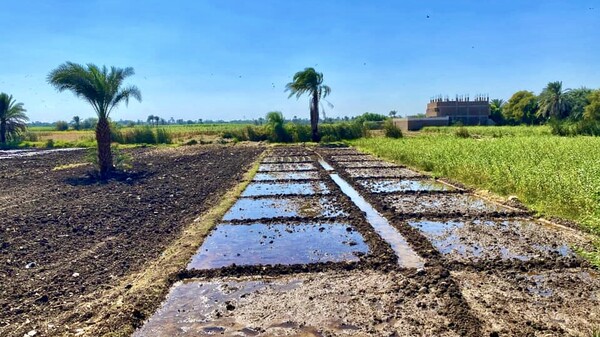
성경 읽기에 적용하기
이런 이들에게 창세기의 노아 홍수 이야기는 어떻게 다가갔을까? 노아의 홍수 이야기에 따르면 40일간 홍수가 쏟아지고(창 7:17), 150일간 땅에 범람했다(창 7:24). "물이 불어서 십오 규빗이나 오르니 산들이 잠긴지라"(창 7:20)는 서술을 마주한 고대 이집트인은 어떤 생각을 했을까?
[2.13] One fact which I learnt of the priests is to me a strong evidence of the origin of the country. They said that when Moeris was king, the Nile overflowed all Egypt below Memphis, as soon as it rose so little as eight cubits. Now Moeris had not been dead 900 years at the time when I heard this of the priests; yet at the present day, unless the river rise sixteen, or, at the very least, fifteen cubits, it does not overflow the lands. - Herodotus, George Rawlinson, Richard Crawley, and Thucydides. 1952. The History of Herodotus : [Translated by George Rawlinson]. Chicago: Encyclopaedia Britannica.
[2.13] This, too, that the priests told me about Egypt, is a strong proof: when Moeris was king, if the river rose as much as thirteen feet, it watered all of Egypt below Memphis. Moeris had not been dead nine hundred years when I heard this from the priests. But now, if the river does not rise at least twenty-six or twenty-five feet, the land is not flooded. - Herodotus, with an English translation by A. D. Godley. Cambridge. Harvard University Press. 1920.

고대 이집트인, 특히 삼각주 지역에 살던 이들은 그들의 온 세상이 물에 잠기는 것을 연례적으로 경험한 이들이었다. "애굽의 물들과 강들과 운하와 못과 모든 호수"(출 7:19)가 온통 붉게 물들었다.
온 세상이 물에 잠기거나 물로 둘러 싸인 땅은 먼동이 틀 때도, 저녁 노을에 잠길 때도, 붉은 빛의 물결 그 자체였다. 이들은 해마다 붉은 핏빛으로 가득한 나일강의 범람을 해마다 마주했다. 그리고 이른 아침과 저녁, 붉은 빛이 가득한 땅에 살았다. 이런 환경에서 살던 이들에게, 나일 하수가 핏빛으로 바뀌는 장면은 어떤 느낌이었을까?
연례 홍수 사건이 노아의 홍수 이야기와 연결되는 순간, 그들이 느꼈을 감회는 어떠했을까? 고대 이집트인은 다른 고대 근동인들과 동일하게 신화적 세계관을 갖고 살던 이들이다. 모든 것이 신적 기원이나 힘으로 발생한다고 믿었다.
나일강을 하피신이나 오시리스 신 등과 연관지어 생각하던 고대 이집트인은 물, 비, 홍수를 다스리는 여호와 하나님에 대해 어떤 반응을 할 수 있었을까?
